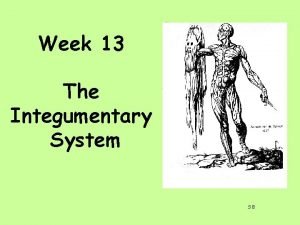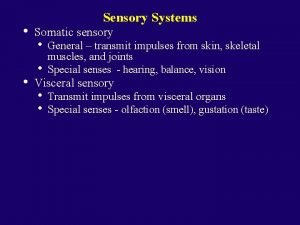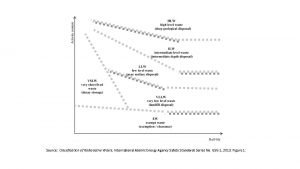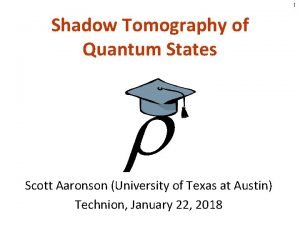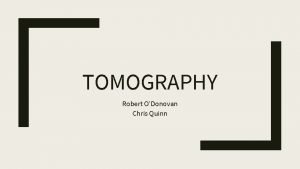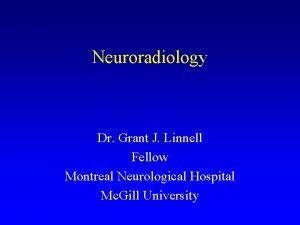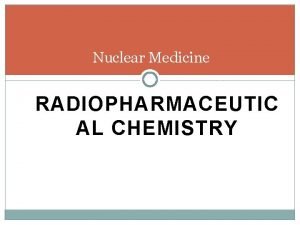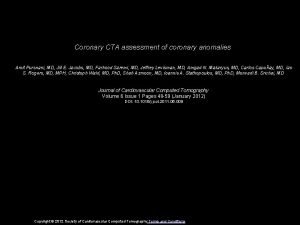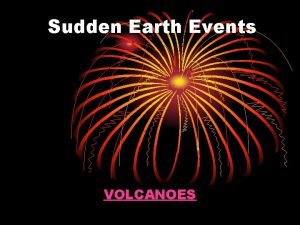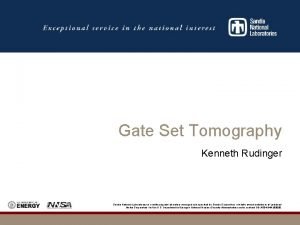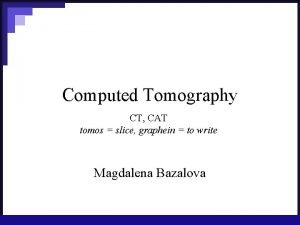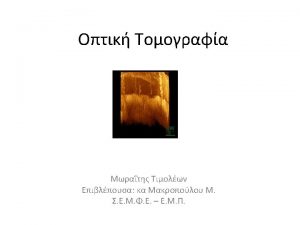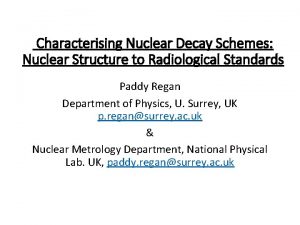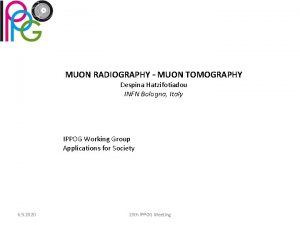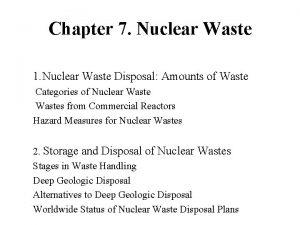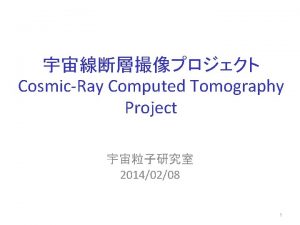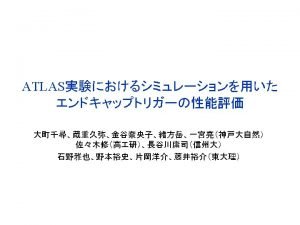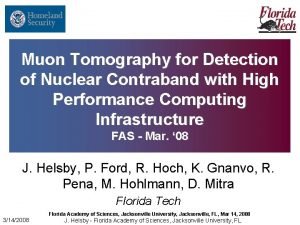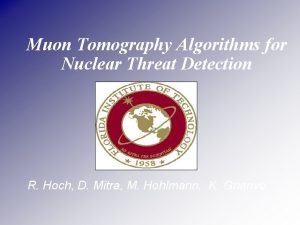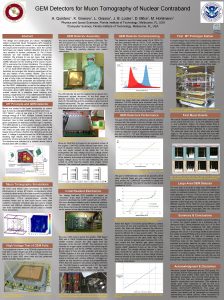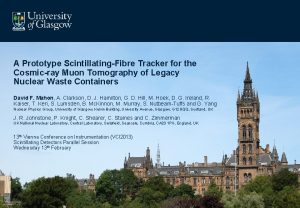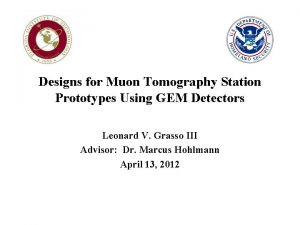Characterising Encapsulated Nuclear Waste using Cosmicray Muon Tomography















- Slides: 15

Characterising Encapsulated Nuclear Waste using Cosmic-ray Muon Tomography Dr. David F. Mahon University of Glasgow 3 rd European Nuclear Physics Conference Nuclear Physics Applications I 31 st August 2015 Muon Project Muon. Tomography Project

The Sellafield Ltd. MT Project: Aims & Objectives • Multi-million pound collaboration with industry (National Nuclear Laboratory & Sellafield Ltd. ), which began in 2009 • Application of detector development and ‘conventional’ nuclear physics research performed by the University of Glasgow at HERMES@DESY, A 2@MAMI, Jefferson Lab etc. • Aims to assess the feasibility of using cosmic-ray muons to inspect the contents of 500 litre nuclear waste containers and characterise any remnant nuclear materials stored within • A small-scale prototype detector has been constructed and has successfully imaged the contents of a small test barrel • A large-scale system is now under development in Glasgow 2

Muon Tomography: Non-invasive Imaging using Cosmic Rays • Cosmic-ray ‘Muography’ is one of the fastest-growing fields in applied research exploiting the absorption or Coulomb scattering of charged muons through an object • Highly-penetrating muons allow the interrogation of large and/or dense shielded objects that cannot be imaged using conventional techniques such as X-rays etc. Absorption Radiography Scattering Tomography imaging plane scattering angle muons detected imaging plane 3

Muon Tomography: Key Events, Applications & Dates Discovery of the muon at Caltech by Carl David Anderson and Seth Neddermeyer (Phys. Rev. 51, 884) 1912 The discovery of cosmicrays by Victor Hess in a hot-air balloon at 5. 3 km. Awarded the Nobel Prize for Physics in 1936 for his career’s work (Phys. Zeitschr. 13, 1084) 1936 Muon radiography used by Nobel Prize winner Luis W. Alvarez to look for hidden chambers in the Second Pyramid of Chephren in Egypt (Science 176, 832) 1955 1967 First reported use in radiography by E. P. George in Australia to measure ice thickness above a tunnel (Commonwealth Engineer July 1, 455) Seminal work Zenoni at Los et al. , applied the Alamos on technique utilising to monitoring Los scientists, Coulomb scattering the structural of Alamos stability of Toshiba and. Here, TEPCO muons to identify historical high-Z buildings. image the. Loggia, interior of the objects for nuclear Palazzo threat della at the detection Brescia Unit-1 dating reactor from 1574 stricken Fukushima(Borozdin et al. , (ar. Xiv: 1403. 1709) Nature Daiichi plant 422, 277) 1999 2003 2007 2014 2015 At the Soudan. Tanaka II detector First et al. , images imagedobtained of in Minnesota the(700 m density encapsulated inside the nuclear underground), 1944 the Moon Usa waste lavaby dome the Sellafield shadow is imaged with cosmic-ray using MT project muon in Glasgow muon flux radiography (Clarkson et al. , JINST (Cobb et al. , Phys. (Geo. Rev. Res. Lett. 10, P 03020) 34, D 61, 092002) 22311) 4

Muon Tomography: European Projects & Applications UK: Legacy Nuclear Waste, Special Nuclear Materials (SNM) detection, Subsurface CO 2 monitoring Italy: Volcanology, SNM detection, cultural heritage, blast furnace monitoring, steel plant safety France: Volcanology, geological applications Germany: Structural integrity applications, blast furnace monitoring Spain: Large-scale applications Hungary: Civil engineering applications Romania: Civil engineering applications Sweden: Spent nuclear fuel assay, blast furnace monitoring Russia: SNM detection, geological applications 5

A Virtual Tour of Sellafield All images and information courtesy of Sellafield Ltd. (www. sellafieldsites. com) Windscale Advanced Gas-Cooled Reactor: Thermal Oxide Reprocessing Plant: Waste and Magnox Encapsulation Plants: Ceased operation in 1981. Currently being de-commissioned. THORP is used for shearing, dissolution and retrieval of uranium and plutonium components of used oxide fuel from both UK and overseas customers. Facility used for processing intermediate level waste (ILW) in a grout matrix within stainless steel drums prior to long term storage. Legacy Waste Silos: These historic facilities currently house Magnox swarf (cladding from fuel elements). 6

Nuclear Waste Encapsulation Magnox Fuel Elements Fuel Rod Cladding Removal Encapsulated Swarf Uranium fuel surrounded by a magnesium alloy (Magnox) cladding (or swarf). Before reprocessing, irradiated fuel must be stored for at least 180 days in ponds to allow short lived fission products to decay. The cladding is stripped from the fuel bar in the Fuel Handling Plant. The fuel is then transported to the Magnox Reprocessing Plant. The swarf stripped from the fuel rods is Intermediate Level Waste (ILW). Shown is a cross section view of ILW which has been grouted in cement for long term storage. Long-term Storage of ILW Encapsulated Waste Stores The ILW is stored in 500 -litre The encapsulated ILW is stored stainless-steel waste containers long-term in product stores on (shown here for a test drum with the Sellafield site. outer section removed) Here, the inside of a product or in 3 m 3 boxes. store is shown with container ‘stillages’ stacked. All images and information courtesy of Sellafield Ltd. (www. sellafieldsites. com) 7

Small-Scale Prototype Technology • A small-scale detector system (1: 16 scale) has been constructed in Glasgow to verify initial GEANT 4 simulations • System comprises four tracker modules each with orthogonal layers of 128 BCF-10 scintillating fibres from Saint-Gobain of 2 mm pitch with emission peaked at 432 nm • Per module, two fibres are coupled to a single pixel of a Hamamatsu H 8500 MAPMT with correct fibre reconstructed in offline analysis The scintillation light strikes the glass photocathode of the MAPMT creating a photoelectron (PE) The photoelectron is focused into the chain of 12 dynodes creating a charge at the anode of the struck pixel a GEANT 4 simulation of the active components of a detector module showing one struck fibre in each plane When triggered the charge signals from each anode are read out by ribbon cables to standard QDCs 8

Small-Scale Prototype Imaging • The system has four modules detector modules: two above and two below the object to be imaged • Each module contains scintillating fibres in the x and y directions • If we identify the x and y fibre hit, their crossover point is used as the muon hit point • From these the incoming and scattered vectors are reconstructed 9

Small-Scale Prototype Imaging • These vectors are propagated into the assay volume and their Point of Closest Approach (Po. CA) is identified • The scattering angle and displacement (2 D example shown opposite as θx and Δx) • The Coulomb-scattering probability (denoted λ) is computed for discrete steps along each muon’s trajectory • After many muons, the most-likely λ 3 D distribution is determined via custom image reconstruction software θx Δx 10

The Sellafield Ltd. MT Project: Imaging Lead within a Concrete-filled Steel Barrel A. Clarkson et al. , JINST 10 (2015), P 03020 10 mm horizontal tomogram 5 mm vertical tomogram Small-scale prototype detector: A side-on view of the system with barrel Test barrel inside detector setup: A stainless-steel, concrete-filled barrel containing lead and uranium samples GEANT 4 simulation of test barrel The two innermost detector modules are shown with the barrel, lead and uranium objects to be imaged 11

The Sellafield Ltd. MT Project: Imaging Uranium within a Concrete-filled Steel Barrel A. Clarkson et al. , JINST 10 (2015), P 03020 10 mm horizontal tomogram 5 mm vertical tomogram Small-scale prototype detector: A side-on view of the system with barrel Test barrel inside detector setup: A stainless-steel, concrete-filled barrel containing lead and uranium samples GEANT 4 simulation of test barrel The two innermost detector modules are shown with the barrel, lead and uranium objects to be imaged 12

The Sellafield Ltd. MT Project: 3 D Visualisation of Encapsulated Nuclear Waste A 3 D movie of these experimental results will be shown here during the presentation on the 31 st August 13

In Conclusion. . . • The field of muon tomography is one of the fastest growing in applied physics with applications in national security, nuclear waste characterisation etc. • A prototype scintillating-fibre muon detector has been developed at the University of Glasgow to assess the feasibility for this purpose at Sellafield • High-Z material detection and discrimination capabilities have been verified in industrial test scenarios to subcentimetre precision using custom image reconstruction software • A full-scale system is being developed in Glasgow for the interrogation industrial 500 litre ILW barrels 14

Acknowledgements This research has been undertaken by the Nuclear Physics group at the University of Glasgow in collaboration with the UK National Nuclear Laboratory. On behalf of the project, I would like to acknowledge the funding contribution from the UK Nuclear Decommissioning Authority and Sellafield Ltd. , which enabled this research to be undertaken. I would also like to thank the organising committee of Eu. NPC 2015 for the opportunity to present this research in Groningen. 15
 Ospf messages are encapsulated in
Ospf messages are encapsulated in Pacinian corpuscle histology
Pacinian corpuscle histology Diseases with vaccines
Diseases with vaccines Encapsulated ending
Encapsulated ending Encapsulated ending
Encapsulated ending Lesson 15 nuclear quest nuclear reactions
Lesson 15 nuclear quest nuclear reactions Fisión nuclear vs fision nuclear
Fisión nuclear vs fision nuclear Radioactive nuclear waste
Radioactive nuclear waste Shadow tomography
Shadow tomography What is tomography
What is tomography Hematome
Hematome Positron emission tomography
Positron emission tomography Journal of cardiovascular computed tomography
Journal of cardiovascular computed tomography Seismic tomography ______.
Seismic tomography ______. Gate set tomography
Gate set tomography 4th generation of ct scan
4th generation of ct scan

